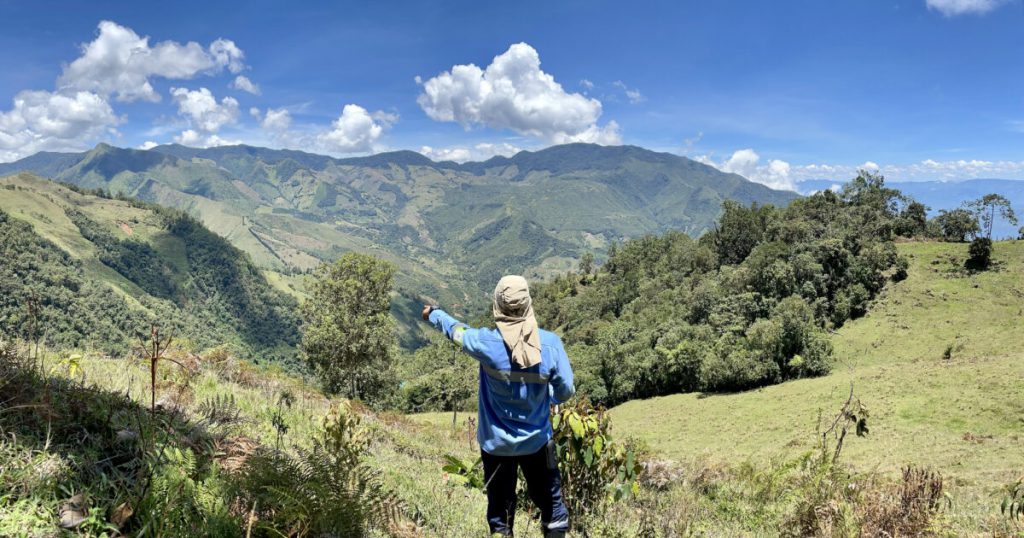Royal Road drills 181 metres of 1.1 g/t AuEq at Guintar, Colombia

Royal Road Minerals Ltd. [RYR-TSXV; RRDMF-OTC] reported results from a further two diamond drill holes and from new saw-cut channel samples taken from outcrops and underground development at its Guintar copper-gold exploration project in Antioquia department, Colombia.
The Guintar project is part of the Guintar-Niverengo and Margaritas (GNM) project area which comprises the two contiguous Guintar, and Niverengo concession contracts and the neighboring Margaritas concession contract, located approximately 50 Km west of Medellin in Antioquia Department, Colombia.
The titles were acquired through the Company’s purchase of Northern Colombia Holdings Limited, an affiliate of AngloGold Ashanti Limited [AU-NYSE; AGD-LSE]. The GNM project is a joint venture pursuant to a strategic alliance agreement dated March 2, 2020 between the Royal Road and Mineros S.A. [MSA-TSX] under which Royal Road is the operator. On April 6, 2022, having funded a total of US$ 2.5 million in exploration expenditures and exercised its first option, Mineros exercised its second option to acquire a 50% interest under the strategic alliance Agreement.
Royal Road holds the remaining 50% interest. Following Mineros’ exercise of the second option, Royal Road and Mineros will contribute funds to further advance the GNM project in proportion to their respective joint venture interests. In December of 2021 the company entered into option agreements with neighboring and immediately contiguous property holders.
Drilling at Guintar began in July 2021 and tested for an underlying intrusive or porphyry-related source to the gold and copper mineralization which had been intersected in previous drilling and is evident in surface geochemical sampling over an area of more than 10 km2. Initial results are encouraging and include GUI-DD-012 with 303.7 metres of 1.0 g/t gold equivalent (including 62.0 metres at 2.1 g/t gold, 12.4 g/t silver and 0.62% copper) and GUI-DD-013, which returned 126.0 metres at 1.4 g/t gold equivalent.
The company received results from two diamond drill holes from its 2022 drilling. Significant intersections include drill hole GUI-DD-020 that returned 118.0 metres of 1.0 g/t gold equivalent (0.8 g/t gold, 3.8 g/t silver and 0.17% copper), including (from 6.0 metres), 54.0 metres of 1.0 g/t gold, 5.5 g/t silver and 0.24% copper.
Drill hole GUI-DD-021 returned 181.0 metres of 1.1 g/t gold equivalent (0.9 g/t gold, 3.6 g/t silver and 0.20% copper), including (from 148.0 metres), 43.0 metres of 2.4 g/t gold, 8.0 g/t silver and 0.40% copper.
Gold and copper mineralization intersected in GUI-DD-020 is associated with porphyry-style veins hosted in diorite dykes and sills, skarn and siliceous hornfels. From surface and over its entire length, GUI-DD-20 returned 434 metres of 0.7 g/t gold equivalent and extends mineralization across the trace of drill holes GUI-DD-12 and 13 to both the east and west and also at depth (the drill hole ended in 0.4 g/t gold).
Drill hole GUI-DD-021 averaged 0.5 g/t gold from surface along its entire length and intersected gold and copper mineralization related with porphyry-style veins hosted in blocks of hornfels and diorite porphyry dykes and sills. The generally broad distribution of gold and copper mineralization in drill holes at Guintar, together with the style of alteration, the block-dyke and sill relationships and extensive regional roof-type geometry is interpreted to imply potential for a major mineralized probably porphyry-style intrusion at depth.
The company carried out saw-cut channel sampling of historic artisanal mining tunnels and exposures of porphyry-style veins along the Careperro Creek. Significant results returned from outcrop in the Careperro Creek, include trench GUI-CH-002 with 24.2 metres of 0.9 g/t gold, 16.2 g/t silver and 0.3% copper and trench GUI-CH-003 with 15.7 metres at 0.9 g/t gold, 9 g/t silver and 0.5% copper. The company is currently locating a drill hole to test beneath these outcropping mineralized veins.
“We are drilling and sampling dyke, sill, hornfels and skarn-hosted gold and copper mineralization with the obvious target being a larger, more coherent body located at depth,” Â said Dr. Tim Coughlin, President and CEO. “In other words, we believe we are in the aerially extensive roof zone to a major underlying mineralized body. This raises the question of what lies beneath the more than 10 km2 of skarn and hornfels hosted gold and copper mineralization which characterizes the project.”
